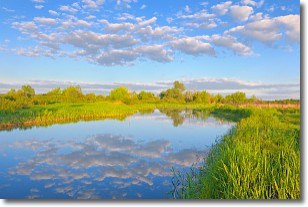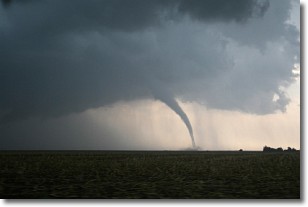Weather Alert in Texas
Flood Warning issued April 24 at 8:48PM CDT until April 25 at 12:30PM CDT by NWS Fort Worth TX
AREAS AFFECTED: Denton, TX
DESCRIPTION: ...The Flood Warning continues for the following rivers in Texas... West Fork Trinity River Near Jacksboro affecting Jack County. ...The Flood Warning is extended for the following rivers in Texas... West Fork Trinity River Near Boyd affecting Wise County. Denton Creek Near Justin affecting Denton County. * WHAT...Minor flooding is forecast. * WHERE...Denton Creek near Justin. * WHEN...Until early tomorrow afternoon. * IMPACTS...At 10.0 feet, Minor out of bank flooding will occur to farm and ranch lands near the creek. * ADDITIONAL DETAILS... - At 8:00 PM CDT Thursday the stage was 6.1 feet. - Bankfull stage is 10.0 feet. - Flood stage is 10.0 feet. - Forecast...The river will rise to just above flood stage after midnight tonight. It will then fall below flood overnight.
INSTRUCTION: Do not drive cars through flooded areas. Caution is urged when walking near riverbanks. Additional information is available at www.water.noaa.gov/wfo/FWD.
Want more detail? Get the Complete 7 Day and Night Detailed Forecast!
Current U.S. National Radar--Current
The Current National Weather Radar is shown below with a UTC Time (subtract 5 hours from UTC to get Eastern Time).

National Weather Forecast--Current
The Current National Weather Forecast and National Weather Map are shown below.

National Weather Forecast for Tomorrow
Tomorrow National Weather Forecast and Tomorrow National Weather Map are show below.

North America Water Vapor (Moisture)
This map shows recent moisture content over North America. Bright and colored areas show high moisture (ie, clouds); brown indicates very little moisture present; black indicates no moisture.

Weather Topic: What are Stratocumulus Clouds?
Home - Education - Cloud Types - Stratocumulus Clouds
 Next Topic: Stratus Clouds
Next Topic: Stratus Clouds
Stratocumulus clouds are similar to altocumulus clouds in their
fluffy appearance, but have a slightly darker shade due to their additional mass.
A good way to distinguish the two cloud types is to hold your hand out and measure
the size of an individual cloud; if it is the size of your thumb it is generally
an altocumulus cloud, if it is the size of your hand it is generally a
stratocumulus cloud.
It is uncommon for stratocumulus clouds to produce precipitation, but if they do
it is usually a light rain or snow.
Next Topic: Stratus Clouds
Weather Topic: What are Wall Clouds?
Home - Education - Cloud Types - Wall Clouds
 Next Topic: Altocumulus Clouds
Next Topic: Altocumulus Clouds
A wall cloud forms underneath the base of a cumulonimbus cloud,
and can be a hotbed for deadly tornadoes.
Wall clouds are formed by air flowing into the cumulonimbus clouds, which can
result in the wall cloud descending from the base of the cumulonimbus cloud, or
rising fractus clouds which join to the base of the storm cloud as the wall cloud
takes shape.
Wall clouds can be very large, and in the Northern Hemisphere they generally
form at the southern edge of cumulonimbus clouds.
Next Topic: Altocumulus Clouds
Current conditions powered by WeatherAPI.com




